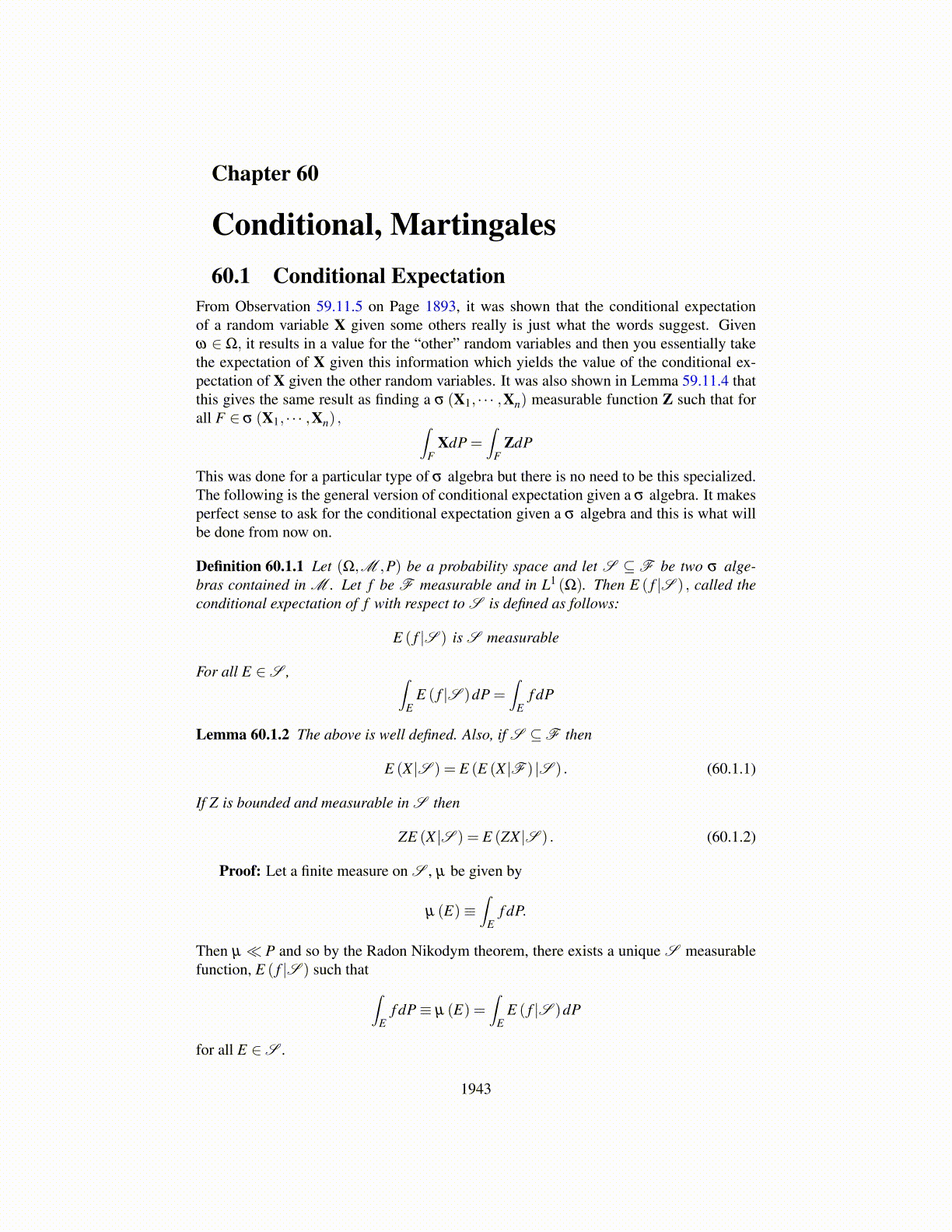
59.21. POSITIVE DEFINITE FUNCTIONS, BOCHNER’S THEOREM 1943
for all f ∈Cc (Rn). Thus from the dominated convergence theorem, the above holds for allf ∈S also. Hence for all f ∈S and considering µ as an element of S∗,
F−1µ (F f ) = µ ( f ) =
∫Rn
f (y)dµ (y)
=1
(2π)n/2
∫Rn
ψ (x)F ( f )(x)dx
=1
(2π)n/2 F (ψ)( f )≡ 1
(2π)n/2 ψ (F f ) .
It follows that in S∗,
ψ = (2π)n/2 F−1µ
Thusψ (t) =
∫Rn
eit·xdµ
in L1. Since the right side is continuous and the left is given continuous at t = 0 and equalto 1 there, it follows
1 = ψ (0) =∫Rn
ei0·xdµ = µ (Rn)
and so µ is a probability measure as claimed. This proves the lemma.The following is Bochner’s theorem.
Theorem 59.21.7 Let ψ be positive definite, continuous at 0, and ψ (0) = 1. Then thereexists a unique Radon probability measure µ such that ψ = φ µ .
Proof: If ψ ∈ L1 (Rn,mn) , then the result follows from Lemma 59.21.6. By Lemma59.21.3 ψ is bounded. Consider
ψ t (x)≡ ψ (x)1
(2πt)n/2 e−12t |x|
2.
Then ψ t (0) = 1, x→ψ t (x) is continuous at 0, and ψ t ∈ L1 (Rn,mn) . Therefore, by Lemma59.21.6 there exists a unique Radon probability measure µ t such that
ψ t (x) =∫Rn
eix·ydµ t (y) = φ µt(x)
Now letting t→ ∞,limt→∞
ψ t (x) = limt→∞
φ µt(x) = ψ (x) .
By Levy’s theorem, Theorem 59.19.7 it follows there exists µ, a probability measure onB (Rn) such that ψ (x) = φ µ (x) . The measure is unique because the characteristic func-tions are uniquely determined by the measure. This proves the theorem.